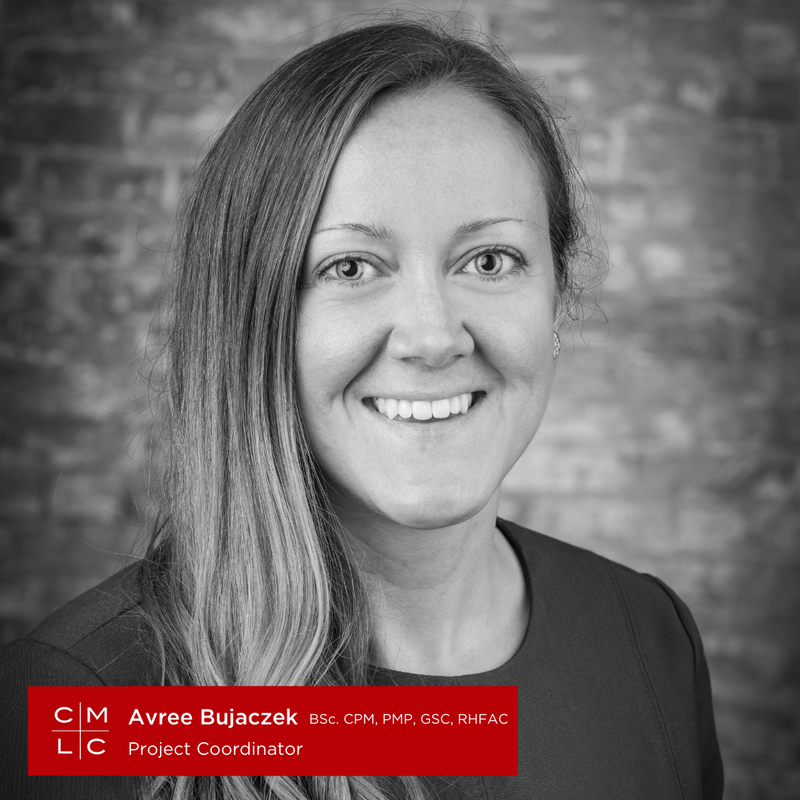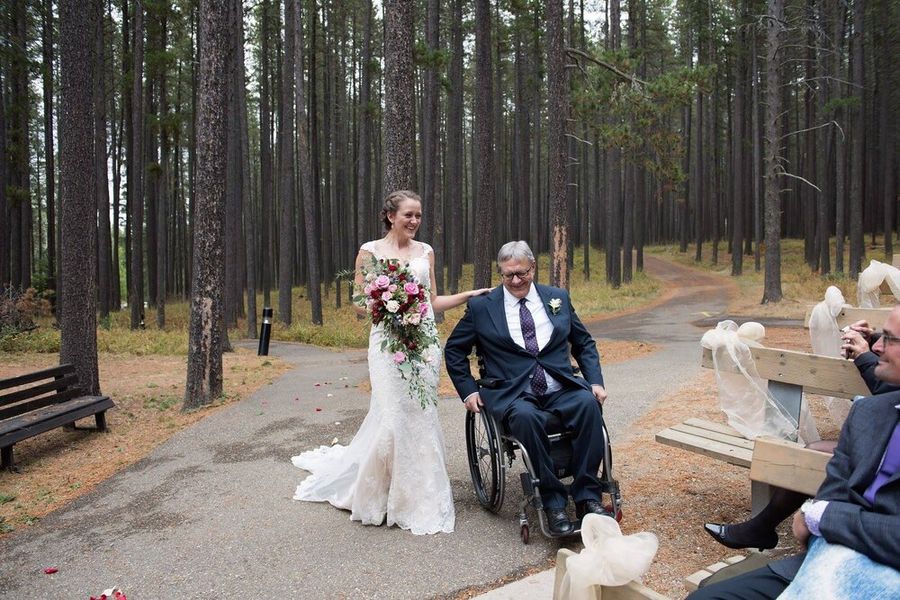Meet the Team: Avree Bujaczek on National AccessAbility Week

This week is National AccessAbility Week in Canada. A week dedicated to celebrating the valuable contributions of Canadians with disabilities, the accomplishments of individuals, communities and workplaces to remove barriers to accessibility and inclusion, and the ongoing work we all have to do to counter discrimination against persons with disabilities and promote a culture of inclusion.
As a city planner and development manager, our work is deeply rooted in the communities we serve. Behind that work is a team of experts who ensure we deliver on our mission of strengthening connections between people and the places they share. Central to that statement is ensuring that these spaces not only serve a need but are inclusive and usable to all. Avree Bujaczek, Project Coordinator at CMLC, brings a combination of qualified project management expertise and a passion for Universal Design and accessibility awareness and among other qualifications, was most recently certified as a Rick Hanson Foundation Accessibility Professional.

Q&A:
What is Universal Design (UD) and why is it important?
Universal Design, as defined by the National Disability Authority, is the design and composition of an environment so that it can be accessed, understood and used to the greatest extent possible by all people, regardless of their age, size, ability or disability. [1] Basically, it’s creating communities that everyone can fully partake in. This is important for many reasons, primarily so all people can exist with ease. Examples include accessible commuting, businesses that people can both work at as employees but also shop or access as consumers. It enables events that all people can attend which overall adds value to people’s lives – both the individuals themselves who have a disability and also their companions.
With as many as one in five Canadian adults currently living with a disability, it is clear that not all disabilities are visible. How does UD integrate invisible disabilities?
This is such an important topic to address. Invisible disabilities can range from types of vision and hearing loss to cognitive disabilities and diseases that are lesser associated with accessibility such as crohns and colitis, arthritis, multiple sclerosis, diabetes, HIV/AIDS, chronic depression, and cancer, which can cause episodic disabilities where people require accessibility considerations, such as washroom access, flexible working hours, among other things. There are seven principles of Universal Design [2]:
- Equitable Use
- Flexibility in Use
- Simple & Intuitive Use
- Perceptible Information
- Tolerance for Error
- Low Physical Effort
- Size & Space for Approach & Use
Examples of how these seven principles incorporate invisible disabilities include things like creating low-sensory spaces in event facilities to provide relief from noisy, crowded places, providing induction loops to assist those with hearing disabilities, having adequate signage in facilities so people can find exits, areas of refuge, low-sensory spaces and washrooms as quickly as possible and offering sensory-friendly performances where jarring noises and lighting changes are reduced or removed.
People often associated UD as being for a small minority of people, but UD actually benefits the majority. Can you elaborate on how UD is actually a fundamental condition to good design?
Life changes quickly! I’m sure anyone with children knows the benefits of having physically accessible spaces when they need to take their children around in a stroller, but UD is also beneficial to anyone who ends up sickly or with a disease or injury. It also reduces touch points which is great in times of concern with things like the COVID-19 pandemic. I recently learned that the chips on all of our debit and credit cards were developed by banks in consultation with customers who were facing dexterity challenges. The small buttons and need to swipe or insert a card was a limitation to those individuals so a change was made. Think about how often you use that chip due to its convenience – for me it’s 100% of the time if the machine I’m using will let me. These are the kind of things UD considerations result in!
What skills and insights does your certification as a Rick Hanson Foundation (RHF) Accessibility Professional bring?
Obtaining a certification as an RHF Accessibility Professional has provided me with the technical expertise to perform building assessments to provide building owners with an RHF Accessibility Certification. This is the specific intent of the Professional accreditation, however, on a daily basis, I use the training from RHF to impact my local community wherever I can. I am CMLC’s in-house advisor on CMLC’s Accessibility Committee and have supported not only my current project, but other projects our Development Team is working on in addition to assisting our Office and Property Manager with accessibility inquiries. Overall, my RHF Professional training has provided me with a breadth of knowledge that I am able to pass along and help educate others so that awareness of Universal Design grows.
Where does your passion for accessibility awareness and Universal Design come from?
My passion for accessibility awareness and Universal Design comes from growing up with a father who uses a wheelchair. My dad was an all-star athlete growing up and had surgery that resulted in paraplegia, leaving him having to rely on the use of a wheelchair for the rest of his life. He took that situation and figured out what he was ABLE to do, and was determined to be great at them; including wheelchair tennis, basketball, and sledge hockey. He built himself ramps on two separate residences. I did not know my dad before he was a wheelchair user but I did grow up seeing the way people looked at him and his chair when we were out. I didn’t get to experience a lot of the things my friends did with their dads, and even the things my older sisters did when they were young before my dad’s surgery. Having a career in construction and development, I know I can have an impact and can help eliminate some of those experience barriers so fewer people miss out on the things many of us take for granted.


What are the most important UD considerations for city builders like CMLC when approaching a project? What could CMLC and other city builders do more of to align more closely with UD?
I think the key considerations are recognizing two things:
- The Building Code is currently not enough – it is the bare minimum and builders should strive beyond that.
- “Accessibility” means more than putting in a ramp and a push-button opener for a door. Keep in mind “nothing about us without us.” Bring in an expert or someone who is living with a disability to provide guidance because many of the current misses are often due to a lack of education.
What are your goals personally and professionally when it comes to accessibility awareness?
Personally, I have recognized how I can improve what I consider accessibility in my home life. When purchasing my home, I didn’t consider that it could be accessible, and now my own father can’t come visit me. I have also had a family member go through extreme illness and recognize the importance of making our home as accessible as possible for unforeseen future needs.
Professionally, my goal is to keep speaking out about accessibility and continue to educate others and myself in the process. There is so much to learn, so many resources, and a lot of people living with a disability who are willing to help and explain the challenges they face if it might help improve their lives and the lives of others. I volunteer for Young Construction Leaders Committee for the Calgary Construction Association and the Program Advisory Committee for the Bachelor of Science in Construction Project Management Program at SAIT and plan to continue to educate my peers and co-volunteers as well, so more people can advocate for change.
What resources would you provide to individuals looking for more information on UD? For businesses? For city builders?
City of Calgary Access Design Standards
PDF outlining the Standards the City of Calgary follows, which is above the Building Code requirements, similar to the Rick Hansen Foundation rating system.
City of Calgary Advisory Committee on Accessibility
City of Calgary Committee; the public can also submit accessibility concerns here.
Rick Hansen Foundation Universal Design 101
Outlines the 7 Principles of Universal Design
Accessibility Standards Canada
Good resources from the Government of Canada; Can also register for their newsletter
References:
[1] https://www.rickhansen.com/news-stories/blog/universal-design-101
[2] https://www.rickhansen.com/news-stories/blog/universal-design-101



